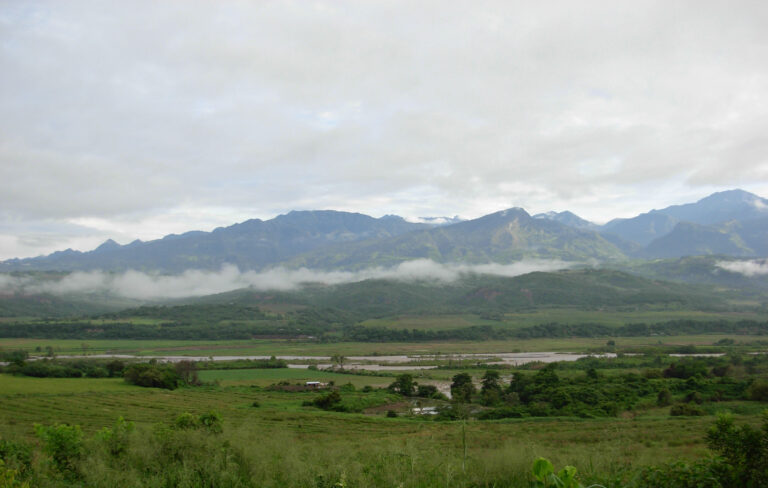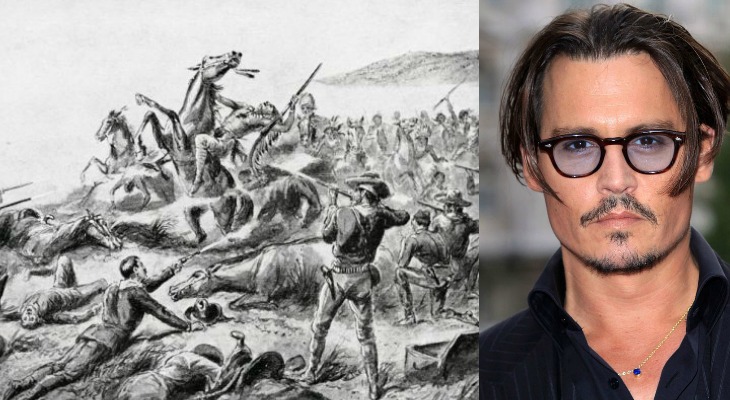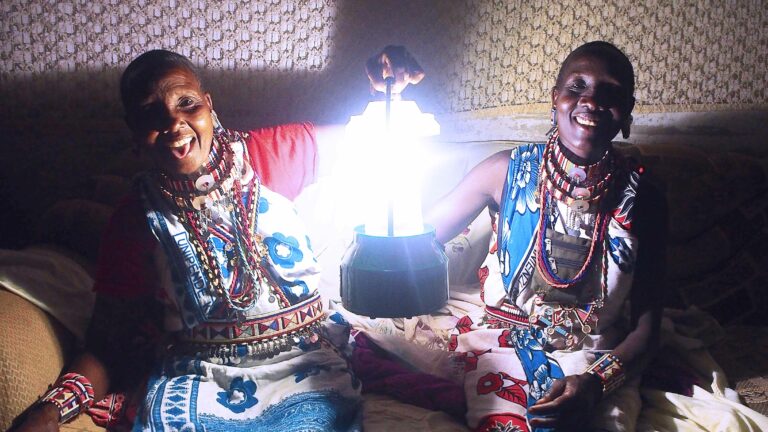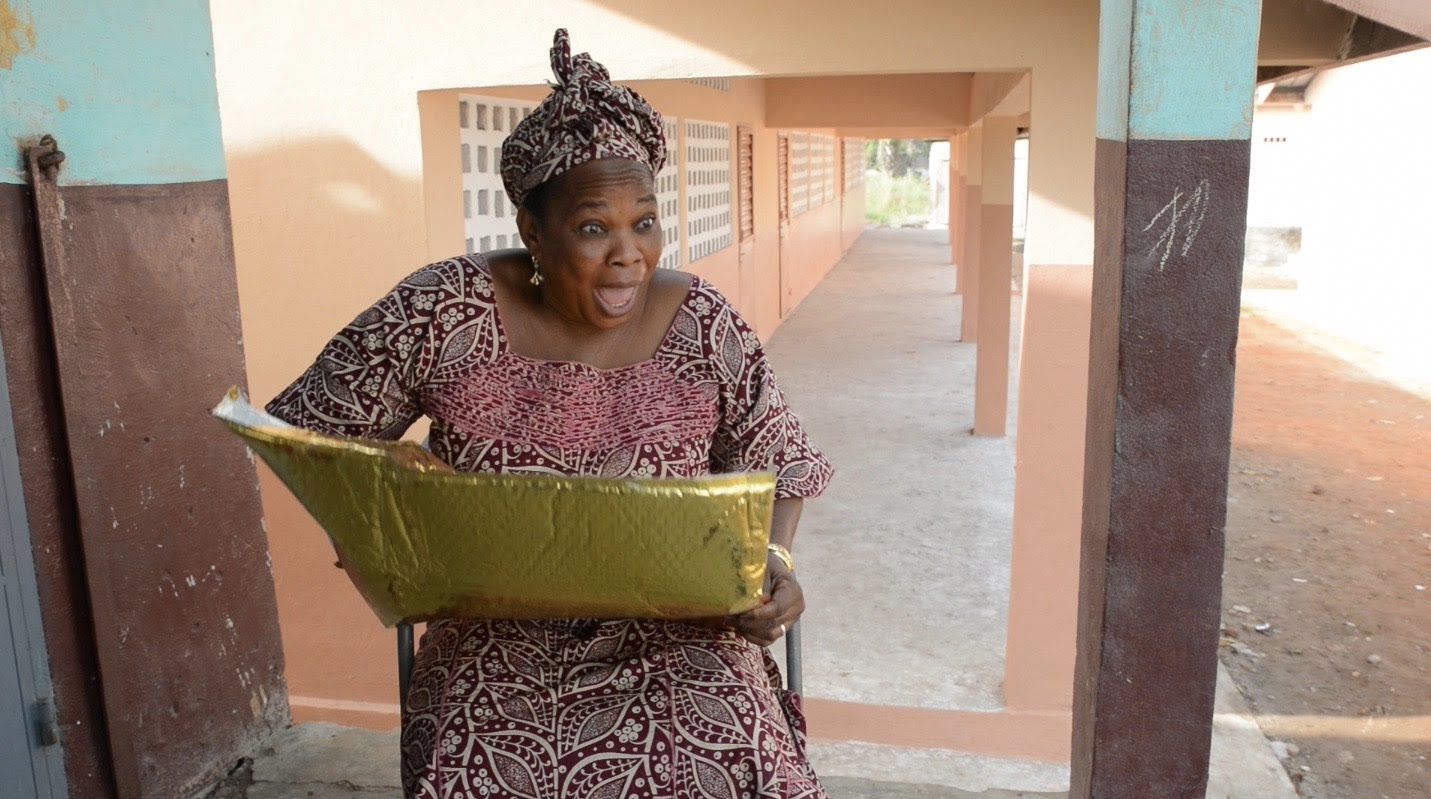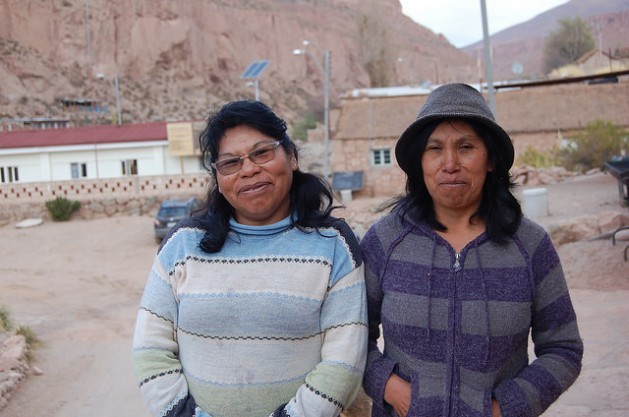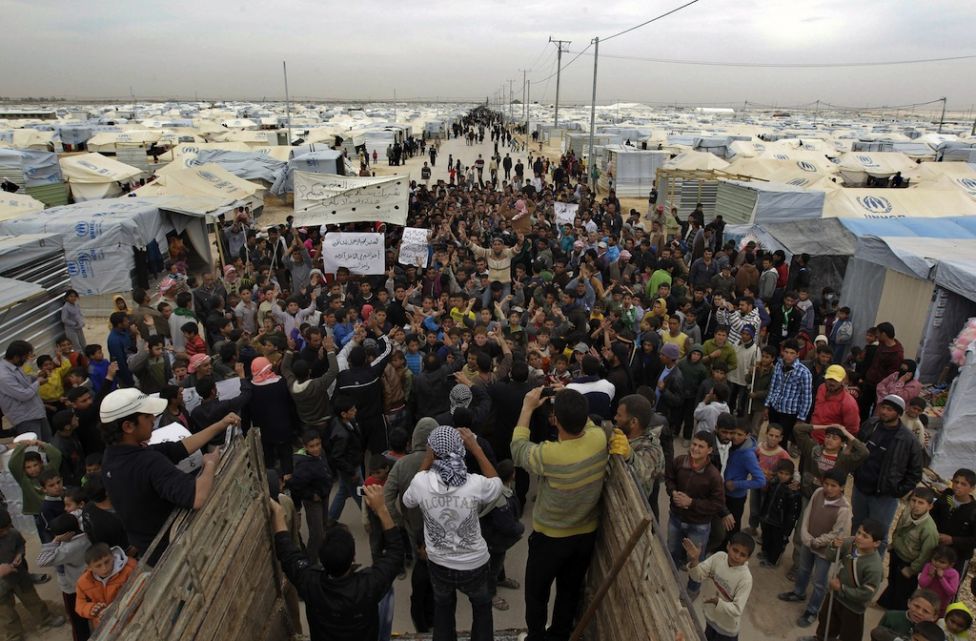100 Amazonian Communities Construct Government To Protect Their Lands
The Wampis people of Peru recently created the nation’s first Autonomous Indigenous Government, which does not seek independence from Peru but intends to protect their rights and their territory.
On November 29, in the town of Soledad, the Wampis announced the formation of their autonomous government that brings together 100 Wampis communities, representing over 10,000 people that reside in the northern Amazonian part of Peru which extends across 3.2 million acres (roughly the size of the U.S. state of Connecticut).
The process that lead to the formation of the new government took place over several years, with over 50 community meetings and 15 general assemblies according to Wampis officials. They were inspired to create the new government by the United Nations Declaration on the Rights of Indigenous Peoples as well as Peruvian laws that acknowledged indigenous rights.
The motivation for the new government also grew out of frustration with how Wampis territory was being sold or given away, without their consent, to various businesses.
One of the Wampis leaders, Andres Noningo Sesen, explained some of their goals in a press statement released in December.
“We will still be Peruvian citizens but now we will have our own government responsible for our own territory. This will allow us to defend our forests from the threats of logging, mining, oil and gas and mega dams. As every year goes by these threats grow bigger,”
-Andres Noningo Sesen, Wampis Leader
One of the defense related examples given by Wampi leaders is their sustained resistance to gold mining operations in their territory by the Afrodita, S.A. Company which was finally ordered to suspend operations along the Cenpea and Maraño rivers. Both rivers suffered from severe mercury and cyanide stemming from mining activities in the area and indigenous resistance to the pollution is credited with forcing the suspension.
“This unity will bring us the political strength we need to explain our vision to the world and to the governments and companies who only see the gold and oil in our rivers and forests. For them, too often we are like a small insect who they want to squash. Any activity planned in our territory that will affect us will now have to be decided by our own government which represents all our communities,”
-Andres Noningo Sesen, Wampis Leader
The Wampis communities started the process towards autonomy by passing a statute known as the Statute of the Autonomous Territorial Government of the Wampis Nation, in which they outlined their plans for the future including protection of religion, spirituality, education, language and the recovery of ancestral place names.
While Peruvian officials have not publicly acknowledged or commented on the formation of the Wampis Autonomous Indigenous Government, Wray Perez Ramirez, the new President of the Autonomous Territorial Government has expressed confidence in their effort.
“We trust that the Peruvian State will support our initiative. This will assist in the compliance of their obligations to respect the fundamental rights of the Indigenous Peoples to determine their own future,” Ramirez said.
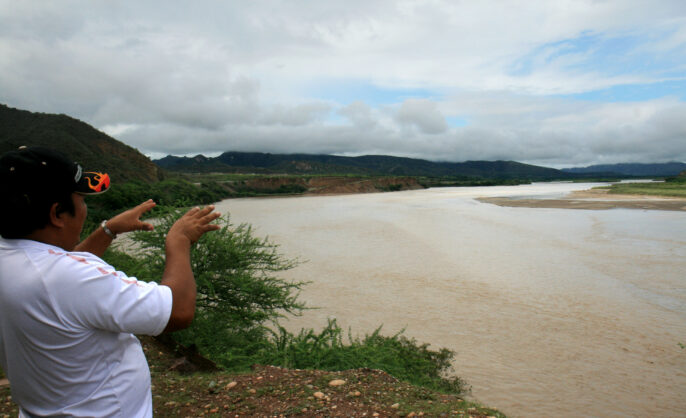
![]()
Johnny Depp Intends To Buy Indian Reservation And Gift It Back To The Native American People
Actor Johnny Depp wants to purchase the historical landmark Wounded Knee and gift it back to the Native American people to help make right what went so wrong in 1890. by Amanda Froelich
In an interview with The Daily Mail on Sunday, well-known actor Johnny Depp disclosed that he intends to buy Wounded Knee, a national historic landmark, and gift it back to the Indian people. He shared that he is ready to spend millions in order to give control back to those that should have inherited the land, and help make right what went so wrong back in 1890.
“It’s very sacred ground and many atrocities were committed against the Sioux there,” he said. “And in the 1970s there was a stand-off between the Feds (Federal government) and the people who should own that land. This historical land is so important to the Sioux culture and all I want to do is buy it and give it back. Why doesn’t the government do that?“
Perhaps it was Depp’s stint playing the role of Tonto in the box office production The Lone Ranger that inspired him to pursue such action; whatever the inspiration, the activism will most certainly be appreciated by many.
Depp spent a massive amount of time doing research about the various tribes and received the approval from many Native American groups before the filming of The Lone Ranger began. His respect for the Native American culture runs deep, and he wanted to make sure that all those involved with the production were doing right by “the Indian” in the way they portrayed the various tribes.
“The idea was to give back to them and to make sure that we got it right,” he said in the lengthy interview.
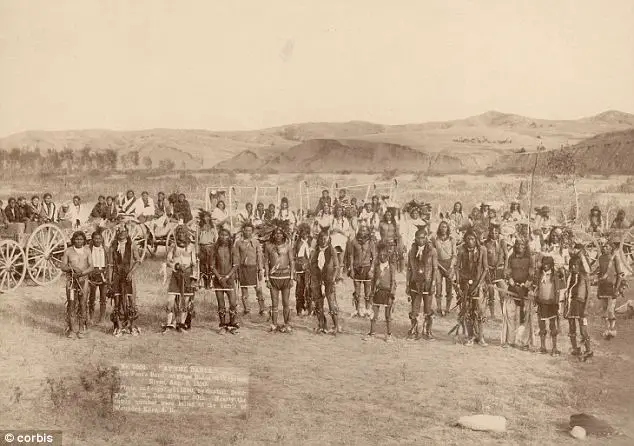 “This picture of the Miniconjou Sioux band was taken near the site of the Wounded Knee massacre one month before the December 1890 massacre where hundreds of Indians were killed.”
“This picture of the Miniconjou Sioux band was taken near the site of the Wounded Knee massacre one month before the December 1890 massacre where hundreds of Indians were killed.”
Credit: Corbis
According to the news source, Depp is intent on following through with the aforementioned plan. The asking price for Wound Knee is $3.9 million, which is a fraction of what Depp makes from one production. That said, there is little standing in the way of him keeping true to his promise.
“I am doing my best to make that happen. It’s land they were pushed on to and then they were massacred there. It really saddens me,” he stated.
The area near Wounded Knee Creek on the Lakota Pine Ridge Indian Reservation (in South Dakota) is where the last major battle of the American Indian Wars took place. The fight reportedly began when an elderly tribesman refused to hand over his weapon. Troops attacked, and at least 150 members of the Lakota tribe – including men, women, and children – were killed.
Honoring the Native American culture by purchasing the historical location will be a major step in helping to make right what went so wrong over a hundred years ago. The event has caused outrage from historians as at least 20 American soldiers were awarded the Medal of Honor for their role in the massacre. Now, at least, the public is more educated on the solemn history and can do what’s right moving forward.
What are your thoughts on this news? Comment below and share this article!
Study Shows Meditation Helps Reduce Racial Bias
by Jill SuttieThis article was originally published by Greater Good in Action.
The shooting death of Michael Brown in Ferguson, Missouri, and the choking death of Eric Garner in New York City have shaken American society to its core, triggering waves of protests. Most Americans seem to feel that racism played a role in these deaths-that they never would have happened if the victims had been white.
While we struggle to make sense of it all, we may also wonder what we would have done if we were in those same situations, as either the unarmed victims or the police. Would we have acted with more caution? Might we have been subject to the same biases that led to these tragedies? And could our conscious brains have overridden any hidden biases we hold?
A new study suggests that, yes, it can be done-and the key might be cultivating nonjudgmental, moment-to-moment awareness of thoughts and feelings.
Research has shown that most of us make split second assumptions about people based on superficial differences in appearance. Scientists have learned to study these unconscious biases using a test called the Implicit Assumptions Test or IAT, which measures how quickly people associate negative or positive words-like “bad” or “good”-with photos of people representing different social groups-such as African Americans or the disabled-flashed upon a screen. Prior studies have shown that white participants taking the IAT tend to have quicker response times when pairing words representing “good” characteristics with white faces and words representing “bad” characteristics with black faces, reflecting their biases about blacks and whites.
This research has real-world implications. Negative associations have been shown to affect how quick study participants are to shoot at a black suspect versus a white suspect when presented with a simulated experience that involves making that decision under ambiguous conditions or time constraints-the kind of decision police officers repeatedly face in their work. Another study found that even trained police officers, when primed to see blacks as dangerous under simulated conditions, are more likely to shoot blacks than whites, whether or not the suspect had a gun.
Interestingly, studies have found that implicit associations, though largely unconscious, are malleable; these studies have identified ways to mitigate negative associations. For example, one study has shown that presenting whites with images of exemplary figures from black history-such as Martin Luther King, Jr.-reduces their knee-jerk negative evaluations of blacks and their knee-jerk positive evaluations of whites. In addition, some studies have suggested that putting people in a positive mood-even just getting them to smile-can interrupt negative implicit attitudes, while other studies suggest that cross-racial friendships also may attenuate implicit biases.
Now, a newly published study by researchers Adam Lueke and Brian Gibson of Central Michigan University suggests another way to impact implicit assumptions: mindfulness.
In their study, 72 white college students were measured on their levels of implicit bias of blacks and the elderly using the IAT. Some participants then listened to a 10-minute mindfulness meditation in which they were instructed to “become aware of bodily sensations (heartbeat and breath) and fully accept these sensations and any thoughts without restriction, resistance, or judgment”; other participants listened to a recording about natural history, voiced by the same narrator. Afterwards, the two groups of students were evaluated on their levels of mindfulness and then reassessed on their levels of implicit bias using the IAT.
Results showed that people who listened to the 10-minute mindfulness recording demonstrated less implicit bias against blacks and old people on the race and age IATs than individuals who listened to the other 10-minute recording. In other words, the mindfulness intervention decreased students’ automatic biases against blacks and older adults.
Why might that be? Mindfulness has been shown before to interrupt the link between past experience and impulsive responding. For example, mindfulness training has been shown to help overeaters decrease the automatic attractiveness of fatty foods, allowing them to resist eating those foods when the foods are presented to them. Mindfulness also encourages a kind of open awareness that can make one more attuned to what’s actually occurring in the present moment-hypothetically allowing one to filter out preconceptions from actual experience, and thereby decrease bias.
One interesting consideration is that in the present study the mindfulness training was very brief and non-specific-in other words, the authors did not specifically try to train the participants in bias-reduction. This leads the authors to suggest that brief mindfulness training may be a good substitute for-or may augment-more traditional anti-bias training.
Could mindfulness training for police officers have made a real difference in Ferguson or New York? It’s hard to say. Even the authors of this study resist equating mindfulness training and bias reduction with decreased racist behavior in the real world, though their lab is currently trying to assess whether or not mindfulness could have that impact.
Still, if such a brief mindfulness intervention can reduce biases, it makes a strong case for teaching mindfulness to youth-and adults as well. If we could all learn to keep some of our knee-jerk biases in check, perhaps we might stand a better chance of preventing future Fergusons from happening again.

From Dishonored Grandmother to Solar Engineer
We’re all looking for stories of hope – that the world can be changed, that we are not limited by our culture, our backgrounds, our histories. Lucy Naipanoi, a grandmother of the Maasai in Kenya, one of the last hunter gatherer tribes left on the planet, represents the potential for evolution and advancement that has …
Ending the Cycle of Violence in Israel and Palestine
Aziz Abu Sarah is a Palestinian born in Jerusalem, who grew up throwing stones at Israeli soldiers and fighting against the occupation. His brother was tortured and died from trauma sustained in Israeli prison when Aziz was just ten years old. Yet he now fights for peace.
I first met Aziz in 2009 at a J Street conference in Washington, D.C., and was captivated by his story. A couple friends from the Center for Ecological Living and Learning and I later had the privilege of touring Jerusalem and Tel Aviv with him as we scoped out a trip to the region.
 Aziz Abu Sarah
Aziz Abu Sarah
Changing the narrative
Aziz demonstrated a passion for, and deep knowledge of the history of the area. And as a Jerusalemite, he had an intimate understanding and grasp of the narratives of both sides, Israeli and Palestinian. Aziz showed a deep love for the Holy Land and all its people, and a special compassion for those mired in prejudices, hatred, and violence. It’s just as he describes in this video: he was there once and knows what that feels like. But he’s discovered a better way.
I wish every Israeli and Palestinian could watch this video and imbibe its message. I wish each one of us who has ever wished for “justice” in the name of revenge could hear the wisdom from someone who has pursued that path and realized its ultimate futility. If we each meted out justice as we see fit, it would never end. Nor does it make you feel better to take revenge, says Aziz, only “more bitter and more empty.” I so admire Aziz’s transformation and the courageous path he has chosen to spread the lessons he’s learned as far and wide as possible.
Faiths working together for peace
Recent clashes in Jerusalem and the West Bank reveal escalating tit-for-tat violence and a heightened state of unrest, whether it’s the shooting of Palestinian protesters, multiple stabbings of Israelis, growing protests on both sides, and heated tension over the sensitive, Muslim-controlled Temple Mount in Jerusalem.
The latter, especially, is seen as evidence that the conflict is taking on increasingly religious tones, which, according to Danny Seiderman, head of Terrestrial Jerusalem, “is planting the seeds of the transformation of a political conflict, which can be solved, into a religious conflict which cannot be solved. We are seeing the ascendancy of those faith communities that weaponize faith. We are seeing the marginalization of traditional religious bodies who understand that Jerusalem is best served by the faiths working together.”
 United for peace
United for peace
The shift from violence to unity
All the more reason to wake up to the truth Aziz is espousing-that it doesn’t help to respond with violence. The familiar Gandhi quote, “An eye for an eye for an eye makes the whole world blind,” is particularly relevant here. Moreover, religious communities, especially, could be building on common ground and working together to solve problems through faith in God which can unite them. United Religions Initiative’s many cooperation circles in the Middle East are doing just that.
Aziz Abu Sarah is Executive Director at the George Mason Center for World Religions, Diplomacy, and Conflict Resolution and co-founder of MEJDI Tours, which leads trips to the Middle East with a dual narrative focus. He has a fabulous TED talk and a blog to follow. Most of all, he’s kind, funny, and a wonderful human being.
WORDS BY JANESSA WILDER
ORIGINALLY APPEARED ON EUPHRATES
The Largest Social Movement in History
When You Know Where to Look You Can See The Great Turning is Occurring Everywhere
An unprecedented phenomenon now happening in this world of ours. Be they teachers in favelas, forest defenders, urban farmers, occupiers of Wall Street, designers of windmills, military resisters (the list goes on…), the fact is people from all walks of life are coming alive and coming together, impelled to create a more just and sustainable society.
In his book Blessed Unrest Paul Hawken presents this – what he calls The Movement With No Name – as the largest social movement of human history. Estimating the number of grassroots groups and nongovernmental organisations for social justice, Indigenous rights and environmental sanity, he suggests a figure of 2 million of us (as of 2007), and counting.
Each of these groups and organisations represents a yet vaster number of individuals who, in some way or another (and each uniquely in their own fashion), are hearing the call to widen the notions of their self-interest and act for the sake of life on Earth.
In this defining moment, countless choices are being made, habits relinquished, friendships forged, and gateways opened to unforeseen collaborations and capacities.
The Time of the Great Turning
These shape the stories that deserve to be told – stories of ordinary men, women and youngsters who are making changes in their minds, their lives and their communities, in order to lay the groundwork for this more just and sustainable world. These are the tales that we need to hear, and those who come after us will want them as well. For when future generations look back at this historical moment, they will see, more clearly than we can right now, just how revolutionary it is. They may well call it the time of the Great Turning.
For those of us living now it is easy to be unaware of the immensity of this transition – from an entrenched, militarised industrial growth society to a life-sustaining civilisation.
Mainstream education and mainstream media do not provide the tools for comprehending such a perspective. Yet social thinkers such as Lester Brown and Donella Meadows and others recognise this transition as the third major watershed in humanity’s journey, comparable in magnitude and scope to the agricultural and industrial revolutions. This is the essential adventure of our time.
Like all true revolutions, it belongs to the people.
Its inspiring stories do not star titans of industry or party politicians, military generals or media celebrities. The power of this revolution lies in the fact that it comes from people of all ages and backgrounds as they engage in actions on behalf of life itself. Their motivation represents a remarkable expansion of allegiance beyond personal or group advantage. This wider sense of identity is a moral capacity more often associated with heroes and saints; but it now manifests everywhere on a practical and workaday plane.
From children restoring streams for salmon spawning, to inner-city neighbours planting community gardens, from forest defenders perched high in trees marked for illegal logging, to countless climate actions to limit greenhouse-gas emissions, an undreamt-of wave of human endeavour is under way. Each of these engagements has its own intrinsic rewards, whether its initial goal is achieved or not. And even when failing to reach the desired outcome, the gains can be invaluable in terms of all that has been learnt in the process – not only about the issue, but also about courage and co-creativity.
 “Ordinary men, women and youngsters who are making changes in their minds, their lives and their communities”
“Ordinary men, women and youngsters who are making changes in their minds, their lives and their communities”
A Simple Faith in the Goodness of Life
Still, it is easy to turn away from playing a part in the Great Turning. All of us are prey to the fear that it may be too late, and thus any effort is essentially hopeless. Any strategy we can mount seems so puny in comparison with the mighty systemic forces embedded in the military-industrial complex. The accelerating pace of destruction and contamination may already be taking us beyond those tipping points where ecological and social systems unravel irreparably.
Along with the Great Turning, the Great Unravelling is happening too, and there is no way to tell how the larger story will end.
So we learn again that hardest and most rewarding of lessons: how to make friends with uncertainty; how to pour your whole passion into a project when you can’t be sure it’s going to work. How to free yourself from dependence on seeing the results of your actions. These learnings are crucial, for living systems are ever unfolding in new patterns and connections. There is no point from which to foresee with clarity the possibilities to emerge under future conditions.
Instead of any blueprint of the future, we have this moment. In lieu of a sure-fire strategy to pull off the Great Turning, we can only fashion guidelines to help us keep going as best we can, and to stay on track with a simple faith in the goodness of life. Here are five of those guidelines that have already served a number of us over the years. Try them out, and make up some of your own.
1. Come from gratitude
We have received an inestimable gift: to be alive in this wondrous, self-organising universe with senses to perceive it, lungs that breathe it, organs that draw nourishment from it. And how amazing it is to be accorded a human life with self-reflective consciousness that allows us to make choices, letting us opt to take part in the healing of our world.
The very scope of the Great Turning is cause for gratitude as well, for it embraces the full gamut of human experience. Its three main dimensions include actions to slow down the destruction wrought by our political economy and its wars against humanity and Nature; new structures and ways of doing things, from holding land to growing food to generating energy; and a shift in consciousness to new ways of knowing, a new paradigm of our relation to each other and to the sacred living body of Earth. These dimensions are equally essential and mutually reinforcing. There are thousands of ways to take part in the Great Turning.
2. Don’t be afraid of the dark
This is a dark time filled with suffering, as old systems and previous certainties come apart. Like living cells in a larger body, we feel the trauma of our world. It is natural and even healthy that we do, for it shows we are still vitally linked in the web of life. So don’t be afraid of the grief you may feel, or of the anger or fear: these responses arise, not from some private pathology, but from the depths of our mutual belonging. Bow to your pain for the world when it makes itself felt, and honour it as testimony to our interconnectedness.
When the Zen poet Thich Nhat Hanh was asked: “What do we most need to do to save our world?” his questioners expected him to identify the best strategies to pursue for social and environmental causes. But Thich Nhat Hanh answered:
“What we most need to do is to hear within us the sounds of the Earth crying.”
When we learn to hear that, we discover that our pain for the world and our love for the world are one. And we are made stronger.
3. Dare to vision
We will never bring forth what we haven’t dared to dream or learnt to imagine. For those of us dwelling in a high-tech consumer society, replete with ever proliferating electronic distractions, the imagination is the most underdeveloped, even atrophied, of our mental capacities. Yet never has its juicy, enlivening power been more desperately needed than now.
So, think of how many aspects of our current reality started out as someone’s dream. There was a time when much of America was a British colony, when women didn’t have the vote and when the slave trade was seen as essential to the economy. To change something, we need to hold the possibility that it could be different. Author and coach Stephen Covey reminds us:
“All things are created twice. There’s a mental or first creation, and a physical or second creation to all things.”
4. Link arms with others
Whatever it is that you’re drawn to do in the Great Turning, don’t even think of doing it alone. The hyper-individualism of our competitive industrialised culture has isolated people from each other, breeding conformity, obedience and an epidemic of loneliness. The good news of the Great Turning is that it is a team undertaking. It evolves out of countless spontaneous and synergistic interactions as people discover their common goal and their different gifts. Paul Hawken sees this amazing emergence at the grassroots level as an immune response of the living Earth to the crises now confronting us.
Many models of affinity groups and study-action have emerged in recent decades, offering methods for learning, strategising and working together. They help us uncover confidence in ourselves as well as in each other.
 “You are as old as the universe”
“You are as old as the universe”
5. Act your age
Now is the time to clothe ourselves in our true authority. Every particle in every atom of every cell in our body goes back to the primal flaring forth of space and time. In that sense you are as old as the universe, with an age of about 14 billion years. This current body of yours has been being prepared for this moment by Earth for some 4 billion years, so you have an absolute right to step forward and act on Earth’s behalf. When you are speaking up at a city council meeting, or protecting a forest from demolition, or testifying at a hearing on nuclear waste, you are doing that not out of some personal whim or virtue, but from the full authority of your 14 billion years.
The beauty of the Great Turning is that each of us takes part in distinctive ways. Given our different circumstances and with our different dispositions and capacities, our stories are all unique. All have something fresh to reveal. All can help inspire others. And that’s why we need these stories…
WORDS BY JOANNA MACY
This article is an edited excerpt from the introduction to Stories of the Great Turning, edited by Peter Reason and Melanie Newman, published by Vala Publications.
Two Indigenous Solar Engineers Changed Their Village in Chile
Liliana and Luisa Terán, two indigenous women from northern Chile who travelled to India for training in installing solar panels, have not only changed their own future but that of Caspana, their remote village nestled in a stunning valley in the Atacama desert.
“It was hard for people to accept what we learned in India,” Liliana Terán told IPS. “At first they rejected it, because we’re women. But they gradually got excited about, and now they respect us.”
Her cousin, Luisa, said that before they travelled to Asia, there were more than 200 people interested in solar energy in the village. But when they found out that it was Liliana and Luisa who would install and maintain the solar panels and batteries, the list of people plunged to 30.
“In this village there is a council of elders that makes the decisions. It’s a group which I will never belong to,” said Luisa, with a sigh that reflected that her decision to never join them guarantees her freedom.
Luisa, 43, practices sports and is a single mother of an adopted daughter. She has a small farm and is a craftswoman, making replicas of rock paintings. After graduating from secondary school in Calama, the capital of the municipality, 85 km from her village, she took several courses, including a few in pedagogy.
Liliana, 45, is a married mother of four and a grandmother of four. She works on her family farm and cleans the village shelter. She also completed secondary school and has taken courses on tourism because she believes it is an activity complementary to agriculture that will help stanch the exodus of people from the village.
But these soft-spoken indigenous women with skin weathered from the desert sun and a life of sacrifice are in charge of giving Caspana at least part of the energy autonomy that the village needs in order to survive.
Caspana – meaning “children of the hollow” in the Kunza tongue, which disappeared in the late 19th century – is located 3,300 metres above sea level in the El Alto Loa valley. It officially has 400 inhabitants, although only 150 of them are here all week, while the others return on the weekends, Luisa explained.
They belong to the Atacameño people, also known as Atacama, Kunza or Apatama, who today live in northern Chile and northwest Argentina.
“Every year, around 10 families leave Caspana, mainly so their children can study or so that young people can get jobs,” she said.
Up to 2013, the village only had one electric generator that gave each household two and a half hours of power in the evening. When the generator broke down, a frequent occurrence, the village went dark.
Today the generator is only a back-up system for the 127 houses that have an autonomous supply of three hours a day of electricity, thanks to the solar panels installed by the two cousins.
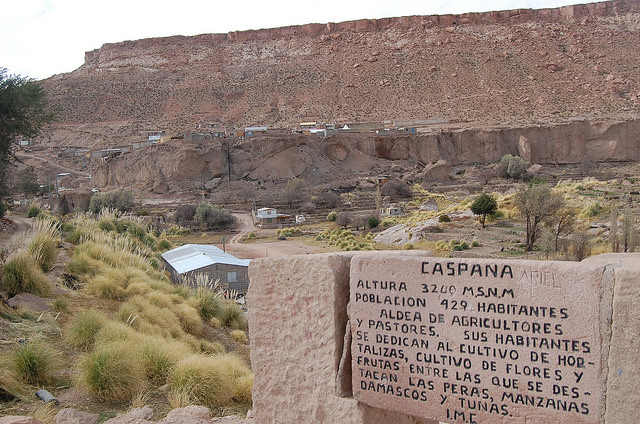
Each home has a 12 volt solar panel, a 12 volt battery, a four amp LED lamp, and an eight amp control box.
The equipment was donated in March 2013 by the Italian company Enel Green Power. It was also responsible, along with the National Women’s Service (SERNAM) and the Energy Ministry’s regional office, for the training received by the two women at the Barefoot College in India.
On its website, the Barefoot College describes itself as “a non-governmental organisation that has been providing basic services and solutions to problems in rural communities for more than 40 years, with the objective of making them self-sufficient and sustainable.”
So far, 700 women from 49 countries of Asia, Africa and Latin America – as well as thousands of women from India – have taken the course to become “Barefoot solar engineers”.
They are responsible for the installation, repair and maintenance of solar panels in their villages for a minimum of five years. Another task they assume is to open a rural electronics workshop, where they keep the spare parts they need and make repairs, and which operates as a mini power plant with a potential of 320 watts per hour.
In March 2012 the two cousins travelled to the village of Tilonia in the northwest Indian state of Rajasthan, where the Barefoot College is located.
They did not go alone. Travelling with them were Elena Achú and Elvira Urrelo, who belong to the Quechua indigenous community, and Nicolasa Yufla, an Aymara Indian. They all live in other villages of the Atacama desert, in the northern Chilean region of Antofagasta.
“We saw an ad that said they were looking for women between the ages of 35 and 40 to receive training in India. I was really interested, but when they told me it was for six months, I hesitated. That was a long time to be away from my family!” Luisa said.
Encouraged by her sister, who took care of her daughter, she decided to undertake the journey, but without telling anyone what she was going to do.
The conditions they found in Tilonia were not what they had been led to expect, they said. They slept on thin mattresses on hard wooden beds, the bedrooms were full of bugs, they couldn’t heat water to wash themselves, and the food was completely different from what they were used to.
“I knew what I was getting into, but it took me three months anyway to adapt, mainly to the food and the intense heat,” she said.
She remembered, laughing, that she had stomach problems much of the time. “It was too much fried food,” she said. “I lost a lot of weight because for the entire six months I basically only ate rice.”
Looking at Liliana, she burst into laughter, saying “She also only ate rice, but she put on weight!”
Liliana said that when she got back to Chile her family welcomed her with an ‘asado’ (barbecue), ’empanadas’ (meat and vegetable patties or pies) and ‘sopaipillas’ (fried pockets of dough).
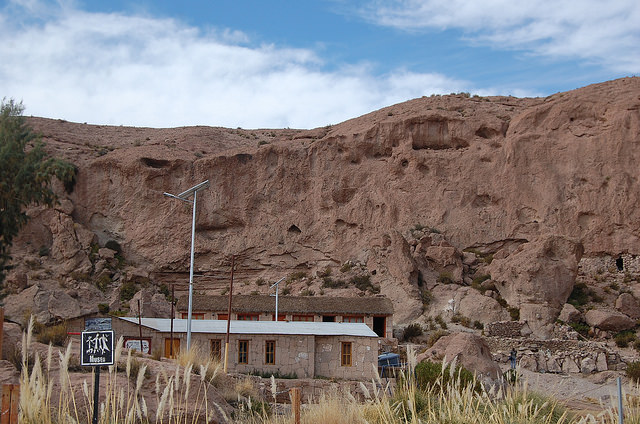
“But I only wanted to sit down and eat ‘cazuela’ (traditional stew made with meat, potatoes and pumpkin) and steak,” she said.
On their return, they both began to implement what they had learned. Charging a small sum of 45 dollars, they installed the solar panel kit in homes in the village, which are made of stone with mud roofs.
The community now pays them some 75 dollars each a month for maintenance, every two months, of the 127 panels that they have installed in the village.
“We take this seriously,” said Luisa. “For example, we asked Enel not to just give us the most basic materials, but to provide us with everything necessary for proper installation.”
“Some of the batteries were bad, more than 10 of them, and we asked them to change them. But they said no, that that was the extent of their involvement in this,” she said. The company made them sign a document stating that their working agreement was completed.
“So now there are over 40 homes waiting for solar power,” she added. “We wanted to increase the capacity of the batteries, so the panels could be used to power a refrigerator, for example. But the most urgent thing now is to install panels in the 40 homes that still need them.”
But, she said, there are people in this village who cannot afford to buy a solar kit, which means they will have to be donations.
Despite the challenges, they say they are happy, that they now know they play an important role in the village. And they say that despite the difficulties, and the extreme poverty they saw in India, they would do it again.
“I’m really satisfied and content, people appreciate us, they appreciate what we do,” said Liliana.
“Many of the elders had to see the first panel installed before they were convinced that this worked, that it can help us and that it was worth it. And today you can see the results: there’s a waiting list,” she added.
Luisa believes that she and her cousin have helped changed the way people see women in Caspana, because the “patriarchs” of the council of elders themselves have admitted that few men would have dared to travel so far to learn something to help the community. “We helped somewhat to boost respect for women,” she said.
And after seeing their work, the local government of Calama, the municipality of which Caspana forms a part, responded to their request for support in installing solar panels to provide public lighting, and now the basic public services, such as the health post, have solar energy.
“When I’m painting, sometimes a neighbour comes to sit with me. And after a while, they ask me about our trip. And I relive it, I tell them all about it. I know this experience will stay with me for the rest of my life,” said Luisa.
This reporting series was conceived in collaboration with Ecosocialist Horizons. Edited by Estrella Gutiérrez/Translated by Stephanie Wildes
The Divestment Movement Has Grown 50-Fold In Just One Year

CREDIT: Photo by Jordan Strauss/Invision/AP, File
The divestment movement is really gaining steam – non-coal, non-fossil-fuel powered steam.
Investors representing $2.6 trillion in assets have pledged to cut fossil fuels from their portfolios, a fifty-fold increase from last year. At least 436 institutions have pledged to stop investing in fossil fuels – for moral or financial reasons. Large pension funds and private companies make up 95 percent of the assets, according to analysis released Tuesday by Arabella Advisors.
“If these numbers tell us anything, it’s that the divestment movement is catching fire,” said May Boeve, executive director of campaigners 350.org.
Actor Leonardo DiCaprio, who established a fund for conservation projects in 1998, also announced that he would join the movement by divesting his assets and those of the Leonardo DiCaprio Foundation.
“Mainstream financial views of fossil fuels will never be the same,” Ellen Dorsey, executive director of the Wallace Daniel Fund, said at a press conference Tuesday. “It is increasingly clear that it is neither OK nor smart to be invested in fossil fuels.”
The divestment movement has two primary components: The idea that owning fossil fuel investments is tantamount to funding climate change, and the idea that the fossil fuel industry itself is poised to lose value over the long term.
“The movement has exposed the embedded vulnerabilities in the fossil fuel industries, from carbon reserves that can never be burned to wasting of company funds on continued exploration for new fossil fuels that can never be used,” Dorsey said. “You are increasingly risking the value of your portfolio if you stay invested in fossil fuels.”
Another analysis found that Massachusetts’ pension plan lost half a billion dollars in the last fiscal year through its fossil fuel investments, ThinkProgress reported Monday.
Perhaps unsurprisingly, as the divestment movement’s reach expands, its geographic footprint does, too. Since last year, the number of divesting foundations based outside the United States has increased from 20 to 34 percent, according to Tuesday’s report. Likewise, the number of universities has expanded from 14 to 40, now representing $130 billion in assets.
The diversity of organizations – from religious institutions to universities to giant public pension funds – suggests that divestment is trumping public or corporate pressures.
“When an organization divests, there’s an acknowledgment of the seriousness of climate change and an acknowledgment that some of these [fossil fuel] companies bear some of the responsibility and could be viewed as part of the problem,” Will Lana, a partner at Trillium Asset Management, told ThinkProgress. “It takes a lot of courage for an institution to recognize that, even if it’s clearly the case,” he added.
That’s a far cry from divesting. But the smaller move appears to have been spurred by Pope Francis’ visit to the United States this week. The pope has been outspoken in the need to act on climate change, which has alienated some U.S. Catholics. Georgetown University, another Catholic institution, has already voted to divest from coal.
In addition to DiCaprio, 2,039 other individual investors have pledged to withdraw from fossil fuel investments. And it is becoming easier for people concerned about climate change to track their money. A website launched last week, Fossil Free Funds, allows people to check their mutual funds and retirement plans for fossil fuel investments.
Ways to Help Syrian Refugees
Originally Written by Tumblr User rrrrnessa.
That Syrian child whose picture is being shared had a name, his name was Aylan Kurdi and he was 3 years old. He had a brother name Galip who was 5 years old who died as well, along with their mother. He had a family and would have had a bright future had the International community done anything to stop the attrocities, had the International community done anything to make seeking reguge easier and more humane. When you share his picture as some nameless person in order to spark outrage, in order to pat yourself on the back for doing *something* or for likes and shares you engage in the dehumanization of a 3 year old child. He had a name, Aylan.
And instead of sharing such a triggering, dehumanizing, and disgusting image to make yourself feel good you could donate money to the many organizations that are attempting to help refugees find shelter, that are attempting to feed them, you could start petitions, you could share the history of the war (words not just pictures), you could write letters to legislators that represent you to help put the pressure on them to act regarding the refugee crisis. When enough people actually DO something…things get done. But when you share a disturbing picture which further fuels our desensitization to violence you’re not doing anything other than appeasing your own ego.
So here are some ways to *actually* help:
1. Doctors Without Borders is providing medical aid in and around Syria. If you call this number you can ensure your funds go directly to Syrian refugees 1-888-392-0392.
2. World Visions works in Lebanon, Syria, and Jordan to provide clean and sanitizing water. You can donate by calling 1-800-562-4453.
3. CARE operates multiple refugee centers in Syria, Jordan and Lebanon and you can donate to them by calling 1-800-521-CARE
4. World Food Program will provide food to Syrians and other refugees…you can donate at wfp.org
5. Islamic Relief USA is also providing food, water, and shelter and you can donate to them by visitinghttp://www.irusa.org/emergencies/syrian-humanitarian-relief/
6. You can also donate to SavetheChildren.org which provides things such as diapers, clothing, and food.
7. You can donate to the U.N refugee agency here: http://donate.unhcr.org/gbr/general/
8. You can purchase items on an Amazon wishlist specifically for the refugees stranded in Calais.https://www.amazon.co.uk/gp/aw/ls?lid=1P2RJO27Q6N2T&tag=independen058-21&ty=wishlist
9. You can sign the following petition to have more asylum seekers accepted in the U.Khttps://petition.parliament.uk/petitions/105991
10. You can donate here to help the refugees stuck in the Balkans get shelterhttps://www.indiegogo.com/projects/help-us-give-them-shelter-on-their-way-to-refuge–2#/
But you can also do more, get involved in grassroots organizations locally, fundraise with your church/mosque/temple. Write and start new petitions. Protest in front of embassies or other places of governance.
Really, there are many ways to help and sharing a picture of a young child…a BABY without his name, his story, anything is not one of them.





